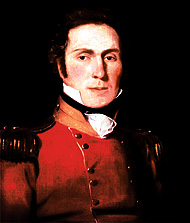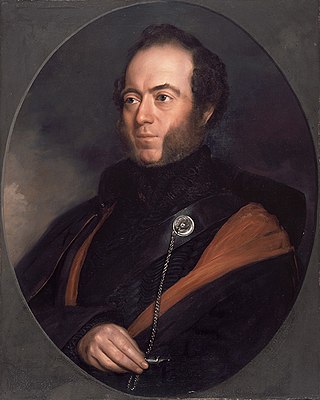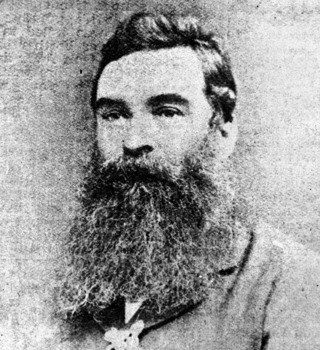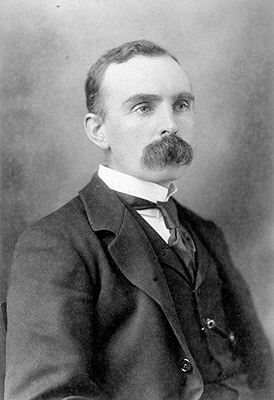
Sir Douglas Mawson OBE FRS FAA was an Australian geologist, Antarctic explorer, and academic. Along with Roald Amundsen, Robert Falcon Scott, and Sir Ernest Shackleton, he was a key expedition leader during the Heroic Age of Antarctic Exploration.

Friedrich Wilhelm Ludwig Leichhardt, known as Ludwig Leichhardt, was a German explorer and naturalist, most famous for his exploration of northern and central Australia.

John Joseph William Molesworth Oxley was an explorer and surveyor of Australia in the early period of British colonisation. He served as Surveyor General of New South Wales and is perhaps best known for his two expeditions into the interior of New South Wales and his exploration of the Tweed River and the Brisbane River in what is now the state of Queensland.

Allan Cunningham was an English botanist and explorer, primarily known for his expeditions into uncolonised areas of eastern Australia to collect plants and report on the suitability of the land for grazing purposes.

Captain Patrick Logan was the commandant of the Moreton Bay Penal Settlement from 1826 until his death in 1830 at the hands of Aboriginal Australians who objected to him entering their lands. As he had been hated by convicts, there were rumours that escaped convicts living in the bush had attacked him, but there is no evidence of this.

Sir Thomas Livingstone Mitchell, often called Major Mitchell, was a Scottish surveyor and explorer of Southeastern Australia. He was born in Scotland and served in the British Army during the Peninsular War. In 1827 he took up an appointment as Assistant Surveyor General of New South Wales. The following year he became Surveyor General and remained in this position until his death. Mitchell was knighted in 1839 for his contribution to the surveying of Australia.

Count Ardito Desio was an Italian explorer, mountain climber, geologist, and cartographer.

Alfred Richard Cecil Selwyn, CMG, LL.D, FRS, FGS was a British geologist and public servant, director of the Geological Survey of Victoria from 1852 to 1869, director of the Geological Survey of Canada (GSC) from 1869 to 1894, and President of the Royal Society of Canada from 1895 to 1896.

Richard Daintree CMG was a pioneering Australian geologist and photographer. In particular, Daintree was the first Government geologist for North Queensland discovering gold fields and coal seams for future exploitation. Daintree was a pioneer in the use of photography during field trips and his photographs formed the basis of Queensland's contribution to the Exhibition of Arts and Industry in 1871. Following the success of the display, he was appointed as Queensland's Agent-General in London in 1872 but was forced to resign in 1876 due to ill-health and malpractice by some of his staff although not Daintree himself. A number of features in North Queensland have been named after Daintree including the town of Daintree, Queensland, the Daintree National Park, the Daintree River, the Daintree Rainforest which has been nominated for the World Heritage List and the Daintree Reef.

Ralph Tate was a British-born botanist and geologist, who was later active in Australia.

Sir Tannatt William Edgeworth David was a Welsh Australian geologist and Antarctic explorer. A household name in his lifetime, David's most significant achievements were discovering the major Hunter Valley coalfield in New South Wales and leading the first expedition to reach the South Magnetic Pole. He also served with distinction in World War I.

William Hann was a pastoralist and explorer in northern Queensland, Australia. His expedition in 1872 found the first indications of the Palmer River goldfield.

Robert Etheridge was a British palaeontologist who made important contributions to the Australian Museum.

John Walter Gregory,, was a British geologist and explorer, known principally for his work on glacial geology and on the geography and geology of Australia and East Africa.

Charles Hedley was a naturalist, specifically a malacologist. Born in Britain, he spent most of his life in Australia. He was the winner of the 1925 Clarke Medal.
Ernest Clayton Andrews BA, FRS, commonly referred to as E. C. Andrews, was an Australian geologist and botanist.

Archibald Meston was an Australian politician, civil servant, journalist, naturalist and explorer.

The geology of Queensland can be subdivided into several regions with different histories. Along the east coast is a complex of Palaezoic to Cainozoic rocks while much of the rest of the state is covered by Cretaceous and Cainozoic rocks. A Precambrian basement is found in the north west and Cape York regions. The Thomson Orogen occurs in the central and southern parts of Queensland, but is mostly covered by younger basins.
The Gregory Range is a mountain range located in Far North Queensland, Australia.

The Lynd River is a river located on the Cape York Peninsula in Far North Queensland, Australia.


















